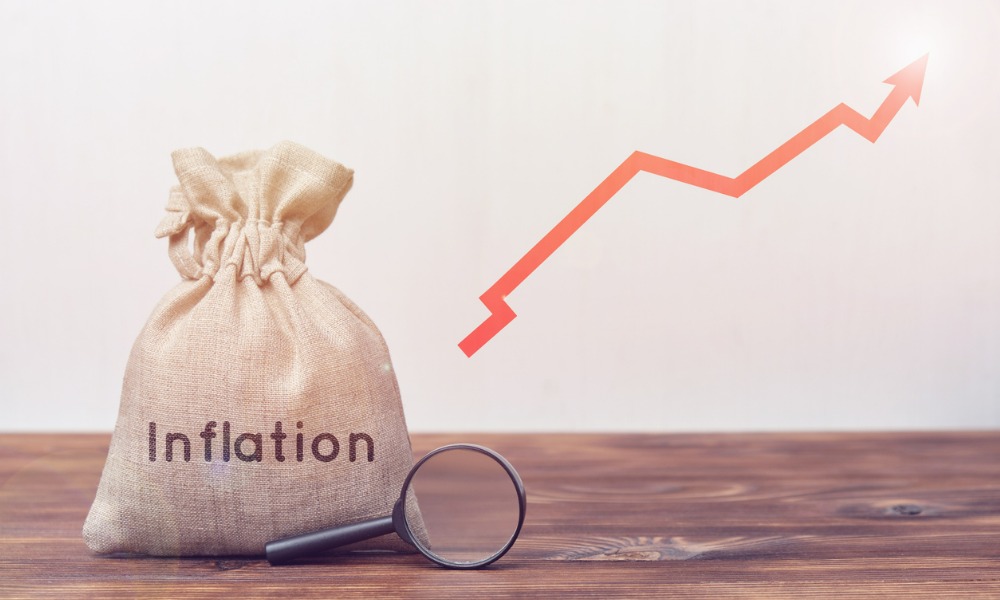AGF's Investment Management team talks about the possibilities and risks of the continuous soaring of prices for energy and financials

Blame the pandemic for the sharpest economic blow-up since the Global Recession in 2008.
The world temporarily shut down. Countries enforced lockdowns and people were quarantined in their homes. No type of travel was permitted so airlines grounded their flights. Factories and businesses were forced to stop operations almost overnight, leaving millions of workers unemployed and without any financial backup. In Canada, the central bank response was to cut interest rates almost to zero and buy up corporate debt, which prevented a total financial meltdown but fueled crippling inflation that the Canadian economy is still reeling from.
Against this backdrop, AGF analysts recently weighed in on how inflation could impact the various markets, examining the good and the downsides in the record-level rise in prices.
In AGF’s 2022 Outlook Report, Dillon Culhane explained how inflation affects energy, utilities, and power stocks in different ways. Depending on the type of business, opportunities should be available to identify investors in different disciplines.
According to Culhane, the usual beneficiaries are oil and gas producers who gain from rising energy prices because higher revenues usually more than offset rising inflation in labor, materials and fuel costs. Producers in better positions are usually more cost-effective, since lower production reductions contribute to reduced reinvestment.
Because of producer capital discipline and the reserve capacity of equipment such as drilling rigs that limit their pricing power, energy service companies are comparatively less profitable and tend to pass on higher costs to their customers. If inflation continues, service companies with high barriers to entry, fierce competition, limited replacement equipment, and persistent pricing power would prove to be the most appealing.
Regulated utilities stocks should pull through, Culchane said, by passing on higher costs to customers through rate increases, while benefitting from the long-term potential for higher regulated return rates. The impact on non-regulated power producers and renewable energy developers may be more evident, Culhane wrote in an AGF report. Smaller companies are more susceptible, given less scale, higher financing costs, and less bargaining power with suppliers and long-term offtake customers, while most large developers are not significantly affected by inflation so far.
All these are under the assumption that inflation continues to rise while economic growth remains strong. However, should growth slow down and stagflation become a threat, it would result in the dropping of energy demand and the downward force on energy prices. Still, it may not be a pressing matter since inelastic (power, heat, petrochemicals) energy demand takes the greater portion.
“Stagflation should also have limited impact on utilities, given their low-growth business models that earn regulated returns on capital spent in areas like grid upgrades, facilities replacement, storm hardening and de-carbonization,” Dulchane said.
The outlook also touched on financials, which was one of the best performing stocks last year. However, the COVID-19 pandemic has impacted the industry on multiple fronts including mass resignations, low hiring, and increase in worker benefits and wages.
According to Richard Fisher, Co-Head of Equity Research and Equity Analyst, stocks of financial companies with asset-sensitive balance sheets generally respond positively to expected market rate hikes as well as central bank rate increases. He cited life insurers as examples of those benefiting from higher interest rates, as they gain from the steeper yield curve associated with these rates. This is because insurance policies sold require a reserve for future insurance claims established using the determined interest rate. As interest rates rise, the value of the reserves needed to increase compound interest decreases, and the resulting difference between what was needed before and after the rate hike can be translated into earnings.
While the impact of higher interest rates is slightly different for banks, to some extent it is usually still positive. When the central bank begins to raise the benchmark interest rate, the prices on floating interest-rate loans will increase quickly, while the interest rate on deposits will change slowly, resulting in an increased margin for banks.
However, the positive impact of higher rates is contingent on the absolute level of interest rates and can be reversed as interest rates rise. Citing research done by BMO Capital Markets, Fisher said the S&P/TSX Canada Bank Index’s performance was positively correlated with 10-year Canadian Treasury yields when yields were less than 4%, but when profits exceeded that mark, there was a negative correlation.
“[I]nflation should remain a catalyst for banks – and financials stocks more broadly – until rate hikes to combat rising prices cause a slowdown or contraction in the economy,” Fisher said. “Given the U.S. Federal Reserve’s current funds rate range between 0 and 0.25% and the Bank of Canada’s overnight rate at 0.25%, that tipping point may be a long way off yet.”



